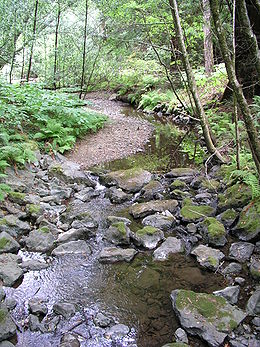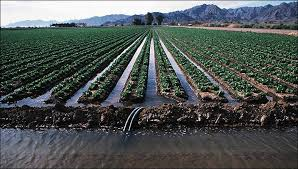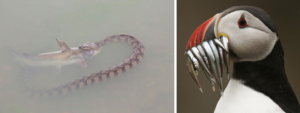
Humans (Homo sapiens) have been on this planet for at least 200,000 years (Hopkin, 2005) and throughout this time we have caused large changes to the river network. These modifications have occurred for many reasons;
- Flood defence
- Irrigation
- Transport of goods
- Drinking water
- Power
- Sanitation
But any changes made to a system has knock on effects to the organisms living there through changes in their biotic, living, and abiotic, non-living, environment. Human mediated change is no exception.
Pollution
As a result of human infrastructure and urbanisation rivers have become polluted with PAHs and heavy metals that have been washed off hard surfaces, such as roads. Industrialisation releases sulphur dioxide and nitrous oxide into the atmosphere which enters the rivers through acid rain. Sewage is also discharged into rivers in some areas, such as from houseboats and canal boats, which reduces the amount of oxygen available in the water for the organisms. Agriculture uses fertilisers and chemicals which, through the process of leaching and run-off, can end up in the river system. Pesticides and herbicides will kill insects and plants in the river system. Other chemicals are toxic to organism, as ammonia is to fish (Ip et al, 2001). Increasing nutrients in the rivers can result in eutrophication:
Flow modification
Some river channels have been deepened and widened to prevent flooding, resulting in their flow becoming faster. Flow has also been slowed in some rivers through the addition of dams, which have been built to supply drinking water and power to the public. Altering the flow of a river has wide spread effects on the ecosystem as it changes the abiotic and biotic composition. A slow flow results in higher temperatures (Dickson et al, 2012) and more sediment deposition (Christiansen et al, 2000) than a fast flow. Dams not only restrict the movement of the water but also organisms, which is a massive problem for migrating species such as eels and salmon. Irrigation results in a reduced water level which can be adverse for larger fish species and also alters the velocity of the flow.

Introduced species
Introductions to rivers can be both intentional, eg for fishing, or unintentional, eg from the underside of boats. Only 1% of introduced species become invasive, affecting native species (Jeschke and Strayer, 2005), by competing for resources, preying on native species or introducing harmful diseases and parasites. This is a major problem in river systems due to their connectivity which mitigates the migration of these species to other reaches of the river making control and eradication difficult.
Harvesting
Excessive commercial harvesting of fish and shellfish in rivers can drastically reduce their numbers and the number of species. Eel and white bait numbers have declined significantly in the Waikato River, New Zealand, since the 1970s for this precise reason (Chapman, 1996). Reducing the population size of a particular species effects those that feed on them, such as other fish, birds, mammals and even reptiles.

[Word count: 494]
References
Chapman M.A. 1996. Human impacts on the Waikato River system, New Zealand. GeoJournal. 40, 85-99.
Christiansen T., Wiberg P.L. and Milligan T.G. 2000 Flow and sediment transport on a tidal salt marsh surface. Estuarine, coastal and shelf science. 50, 315-331.
Dickson N.E., Carrivick J.L. and Brown L.E. 2012. Flow regulation alters alpine river thermal regimes. Journal of hydrology. 464, 505-516.
Hopkin M. 2005. Ethiopia is top choice for cradle of Homo sapiens. Nature news. doi:10.1038/news050214-10.
Ip Y.K., Chew S.F. and Randall D.J. 2001. Ammonia toxicity, tolerance, and excretion. Fish physiology. 20, 109-148.
Jeschke J.M. and Strayer D.L. 2005. Invasion success of vertebrates in Europe and North America. PNAS. 102, 7198-7202.
Recent Comments